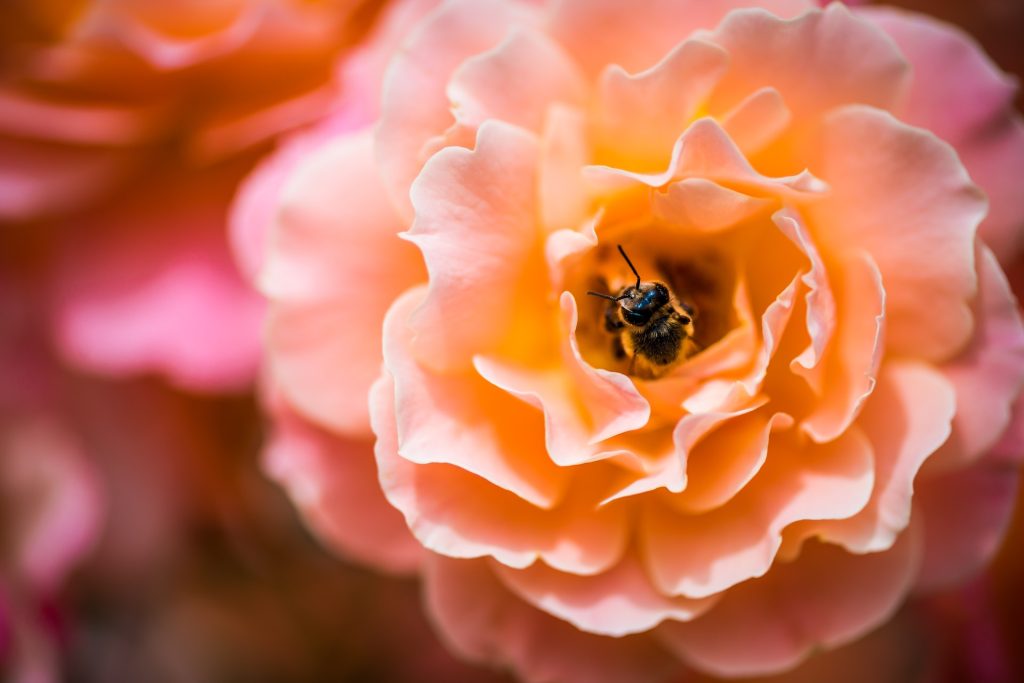Bees are vital pollinators that play a crucial role in our ecosystem and food production. However, bee populations worldwide are facing numerous challenges, including habitat loss, pesticide exposure, and climate change. As individuals and communities, we can contribute to the preservation and well-being of bees by adopting bee-friendly practices. In this article, we will explore the importance of bee-friendly landscaping and urban beekeeping, highlighting the positive impact these practices have on bee populations and the environment.
Bee-Friendly Landscaping
- Enhancing Biodiversity: Bee-friendly landscaping involves creating habitats that support diverse plant species, providing bees with abundant sources of pollen and nectar throughout the year. By planting a variety of flowering plants, trees, and shrubs, you can create a pollinator-friendly environment that attracts and sustains bee populations. Incorporating native plant species is particularly beneficial as they have co-evolved with local bee species, ensuring a mutually beneficial relationship.
- Providing Food and Shelter: Bees require food sources and suitable nesting sites to thrive. By planting a range of plants that bloom at different times, you can provide a continuous food supply for bees from early spring to late fall. Include flowering plants with different shapes, colors, and sizes to cater to a wide variety of bee species. Additionally, creating nesting habitats such as bee houses, natural brush piles, or undisturbed areas of soil and vegetation can offer shelter and nesting opportunities for solitary bees.
- Minimizing Pesticide Use: Pesticides, including insecticides and herbicides, can be harmful to bees and other pollinators. Minimize or eliminate the use of chemical pesticides in your landscaping practices to create a safe environment for bees. Instead, explore organic and natural alternatives to manage pests and weeds. If pesticide use is necessary, apply them during times when bees are less active, such as late in the day or early in the morning.
- Water Sources: Bees require a source of water for hydration, especially during hot summer months. Create water features such as shallow birdbaths, small ponds, or water dishes with floating objects for bees to perch on while drinking. Providing a clean water source near your bee-friendly landscape can help support their well-being.
Urban Beekeeping
- Increasing Bee Populations: Urban areas can provide suitable habitats for bees when managed appropriately. Urban beekeeping involves keeping honeybees or native bees in urban environments, such as rooftops, balconies, or community gardens. By engaging in responsible beekeeping practices, urban beekeepers can contribute to the conservation and growth of bee populations, promoting biodiversity and pollination in urban settings.
- Pollination Services: Urban beekeeping can provide essential pollination services to urban gardens, green spaces, and nearby agricultural areas. Bees visit flowers in search of nectar and pollen, aiding in the fertilization of plants and promoting fruit and seed production. The presence of bees in urban environments can enhance the productivity of gardens and contribute to local food production.
- Educational Opportunities: Urban beekeeping offers educational opportunities for communities to learn about the importance of bees, their life cycles, and the challenges they face. Beekeeping associations and community organizations often provide workshops, training, and educational programs for aspiring urban beekeepers and the general public. These initiatives help raise awareness and foster a deeper understanding of bees and their role in the ecosystem.
- Sustainability and Local Honey Production: Urban beekeeping supports sustainable practices and local food systems. Honey produced by urban bees is often distinct in flavor and quality, reflecting the unique floral sources within the urban environment. Supporting local beekeepers and consuming locally produced honey can contribute to sustainable food choices and support the well-being of bee populations.
Conclusion
Bee-friendly landscaping and urban beekeeping are essential practices that promote the well-being of bees and contribute to the conservation of these vital pollinators. By creating habitats that support biodiversity, providing food and shelter, minimizing pesticide use, and engaging in responsible urban beekeeping, we can play a significant role in preserving bee populations and supporting sustainable ecosystems. Embracing these practices not only benefits bees but also enhances our own surroundings, promotes local food production, and contributes to a healthier planet for future generations. Let us all strive to create bee-friendly landscapes and embrace urban beekeeping as part of our commitment to environmental stewardship and the well-being of bees.






